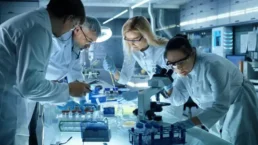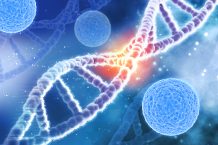

insights
Raw Materials Control for Biotechs (Part 1): Pre-Clinical Development Considerations
The product development stage, commonly referred to as pre-clinical development, precedes launch of an Investigational New Drug (IND) submission, or equivalent regulatory submission in support of conducting a phase 1 clinical study. This stage is rife with critical decisions for chemistry, manufacturing, and controls (CMC) which can impact the quality of the drug substance (DS) and drug product (DP) that early-stage biotech companies intend to use for their phase 1 clinical trial. These decisions include design and execution of the manufacturing processes, the types of quality control (QC) tests required for in-process, lot release and stability testing, the acceptance criteria to be established for lot release and stability, choice of container/closures, monitoring and improving impurity profiles, design of the stability program, choice of material to be used in IND-enabling studies, and more.
One of the most critical and impactful of the CMC decisions that an early-stage biotech company will make is the choice of the quality of the raw materials used to develop the DS and DP manufacturing processes. It is often the case that raw material selection is based on research studies conducted early in process development by individuals not familiar with the requirements of current Good Manufacturing Practices (cGMP) – the cornerstone of a successful clinical development program. As a result, critical process development work may utilize raw materials posing regulatory challenges to the company when they submit their IND application for U.S. Food and Drug Administration (FDA) review.
These challenges can include:
- Use of raw materials of poorly defined or inadequate quality.
- Use of animal-derived raw materials which raise the possibility of introducing adventitious agents (bacteria, molds, yeast, virus, prions) into the manufacturing process stream.
- Raw material impurities entering the manufacturing process stream which, if not removed or significantly reduced, can pose a safety risk to patients. For example, host cell and microbial contaminants of drug product can modulate a patient’s innate immune response.1
- Use of raw materials manufactured for non-pharmaceutical purposes, not intended for use in the manufacture of drug product to be administered to patients.
- Insufficient data regarding lot-to-lot variability in the quality of the raw material and the impact of this variability on the reproducibility of the DS or DP manufacturing process.
This article will discuss how early-stage biotechnology companies can address these pitfalls and establish a solid cGMP foundation for their raw materials control program. While the focus is on cell and gene therapies (CGTs), the content generally applies to other types of early-stage biological therapies.
Let’s start with definitions:
A Raw Material is a general term used to denote starting materials, reagents, and solvents intended for use in the production of intermediates or drug substance.2
A Starting Material should be a substance of defined chemical properties and structure. A starting material is incorporated as a significant structural fragment into the structure of the drug substance. “Significant structural fragment” in this context is intended to distinguish starting materials from reagents, solvents, or other raw materials.3
An Excipient is a raw material formulated with drug product that is intended to enhance DP properties such as stability, bioavailability, half-life, etc.4
Evaluation of Raw Materials to be Used During Process Development
Early-stage biotech companies should carefully evaluate raw materials intended for use in their manufacturing process. This evaluation is best conducted as a formal risk assessment with the goal of identifying raw materials critical to the manufacturing process with the requisite quality to ensure successful execution of that process and with an acceptable safety profile.5-7If carefully documented, the risk assessment can potentially be used when approaching the FDA regarding raw material safety designations in later stages of development.
Consider including the following elements in the risk assessment:
- Function of the Raw Material: Identify where in the manufacturing process the raw material is used and its intended purpose.
- Supporting Raw Material CMC Information: Review, to the extent possible, critical CMC information associated with the raw material, including: the manufacturing process, lot release tests, lot release specifications, impurity profile, stability profile, etc. Some raw materials may have undergone a safety assessment in animal studies, and that information should be reviewed. The raw material manufacturer may have filed a Drug Master File (DMF)8 with the FDA which should include all this information. While the content of a DMF is considered proprietary, DMF holders may share summaries of specific DMF sections. A summary of control of raw materials and a summary of the excipients used to manufacture DP and their control are valuable information for the risk assessment. When access cannot be granted, approach the DMF holder regarding the possibility of a third-party review of the DMF or securing product information in an alternate format (e.g., a Technical Data File). Securing this information will greatly facilitate the risk assessment.
- Impurity Profile: Identify process impurities (antibiotics, enzymes, column leachates, residual host cell proteins, residual host cell nucleic acids, etc.) and associated lot release criteria for these impurities that should be monitored by the raw material manufacturer. Identify potential safety issues arising from each process impurity based on the ability of the DS/DP manufacturing process to clear that impurity, as discussed below.
- Identify and Assess Impurity Clearance Steps in the Manufacturing Process: Establish the effectiveness of the DS/DP manufacturing process in reducing each impurity to acceptable levels. To generate this information, impurity-specific assays should be developed and qualified (later in clinical development, validation of these assays will be required). When qualifying impurity assays, it is important to establish the limit of detection (LOD) and limit of quantitation (LOQ) for each assay. Ideally, levels of impurities measured in DP will be less than the assay LOD, that is, undetectable. The assay should be capable of measuring impurity levels for in-process samples as well as DS or DP samples so that an accurate estimate of impurity clearance can be achieved by extrapolating from available in-process data based on an understanding of the clearance abilities (e.g., dilution factors) for each subsequent manufacturing process step.
- Source: Establish the source of the raw material. Is it derived from animal tissues or non-animal sources (e.g., yeast, bacteria, plants)? Is it synthetically manufactured? If derived from a mammalian cell bank, how thoroughly was that cell bank tested for the presence of adventitious agents?9,10 How effective is the downstream purification process in removing/inactivating virus that enters the process stream?
For example, mammalian cell bank-derived monoclonal antibodies (mAbs) used for immunoselection of cells or proteins as part of cell therapy DS manufacture pose regulatory challenges including qualification of the master/working cell banks, inactivation/clearance of virus from the mAb manufacturing process, removal of process residuals (column leachates, host cell protein, host cell nucleic acid, etc.) Before using a mAb in a DS manufacturing process, it is essential to understand how the mAb is manufactured, tested, and released. The mammalian cell bank used to produce the mAb should be fully characterized for adventitious agents, and manufacturing process steps claimed to clear/inactivate a virus should be verified by a viral clearance/inactivation study. Lot release should be based on an assessment of mAb identity, potency, purity, and stability.11
Raw materials sourced from bovine or porcine tissues are scrutinized by regulatory authorities as they can be a significant source of adventitious agents. For example, the manufacture of stem cell therapies typically requires the use of fetal calf or fetal bovine serum (FBS) in the cell culture media. When selecting a source for this material, the following information should be confirmed: 1) Source of the FBS, provided in a Certificate of Origin (CoO), (fetuses of healthy, prepartum cows deemed fit for human consumption through ante- and post-mortem inspection by licensed veterinarians that has been collected in government inspected and registered abattoirs as well as the geographic location of the source herd); 2) Ability of the manufacturing process to clear/inactivate virus. Filtration, heat inactivation, gamma irradiation or a combination thereof are typically used; 3) Testing and acceptance criteria should meet regulatory standards.12,13
Certificates provided by the manufacturer should include a Certificate of Analysis (CoA), a Certificate of Origin (CoO), including a Transmissible Spongiform Encephalopathy/Bovine Spongiform Encephalopathy (TSE/BSE) compliance statement. A CoO should indicate the source material used to generate the raw material (biological, animal, fermentative, mineral, natural, synthetic, or vegetable). The TSE/BSE statement should comply with the European guidance on minimizing the risk of transmissible spongiform encephalopathies contaminating medicinal products.14
Some vendors will combine the CoO and TSE/BSE compliance statements in a single document. An FBS manufacturer may have obtained a Certificate of Suitability from the European Directorate for the Quality of Medicines and Healthcare (EDQM), confirming compliance of the raw material with specific monographs of the European Pharmacopeia. This certificate verifies that a raw material has been manufactured and tested to exacting standards with an excellent safety profile. If available, this certificate should be provided and reviewed.
Whenever feasible, consider replacing bovine- or porcine-derived raw materials with raw materials that pose less of a safety risk. For example, porcine trypsin can often be replaced with a comparable protease or collection of proteases derived from a non-animal source. Bovine serum albumin (BSA) can often be replaced with human serum albumin (HSA). There is a commercially available HSA that is FDA/European Union approved as a biologic injectable product. Empirically confirm that every raw material candidate is suitable for use in the manufacturing process before an established raw material is replaced. Don’t assume that a higher purity raw material will necessarily work as well or better in your manufacturing process than the current grade in use.
For synthetically produced raw material, evaluate the impurity profile. Confirm that typical impurities such as residual solvents and elemental impurities are measured at levels that do not raise safety concerns.
For a raw material not intended for manufacture of a biologic therapy, it is essential that the risk assessment evaluate the material’s manufacturing process, impurity profile, stability profile and potential breakdown products that could introduce contaminants into the DS/DP process stream, posing an unacceptable safety risk. If a compendial chapter exists for this raw material, then consider executing the tests described in the compendial chapter and confirm that all compendial lot release criteria have been met before determining if the raw material is suitable for use in your manufacturing process.
Evaluating Raw Material Suitable for Use in the GMP Manufacturing Process
Consider the following:
- Grade: From a regulator’s perspective, highly characterized raw materials manufactured and tested in a controlled and reproducible manner with measured critical quality attributes that allow for accurate assessment of raw material identity, purity, potency, stability, and safety are the ideal materials for use in GMP manufacture. Raw materials that are tested per compendial chapter requirements and satisfy compendial acceptance criteria are considered by regulators to meet these expectations. These raw materials should be used in the manufacturing process whenever possible. Confirm their suitability for use empirically during process development. Non-compendial grade raw materials, including Research Use Only (RUO) and Clinical Grade raw materials, should be evaluated for use in the manufacturing process on a case-by-case basis. This evaluation should include an assessment of raw material manufacture, quality attributes, lot release criteria, lot release tests, etc. with an emphasis on potential safety issues, as noted earlier.
- Bear in mind that vendors (suppliers or manufacturers) of raw materials may employ their own product grading systems which are not typically subject to regulatory review. For example, the term ‘GMP Grade’ is a raw material grade term commonly in use. In this author’s experience, regulators prefer to restrict the term ‘GMP’ to a level of quality oversight applied to product manufacture, testing, release, storage, etc. and not use it to describe a grade of raw material. Exercise due diligence in evaluating vendor grade claims.
- Establish the Bioburden Load: Many raw materials are not sterile; the vendor may allow bioburden (levels of microbial contaminants) in its product. It is important to understand the bioburden load that could potentially be introduced into the DS/DP process stream and how effectively the manufacturing process can clear bioburden. Determine if the raw material is evaluated for the presence of microbes and/or microbial contaminants and the tests employed by the manufacturer. The ‘gold standards’ for this type of testing include Sterility Testing by USP<71>, Bioburden Testing by USP<61>, Testing for Objectionable Microorganisms by USP<62>, Endotoxin Testing by USP<85>, Mycoplasma testing by USP<63>. The use of non-USP test methods may be acceptable (e.g., the use of polymerase chain reaction to test for mycoplasma), but these test methods should be evaluated, if possible, in discussion with the manufacturer or the testing lab to confirm their suitability.15
- For example, use of recombinant protein raw materials derived from E. coli fermentation, should be assessed for levels of endotoxin. Confirm the DS/DP manufacturing process can reduce measured endotoxin in DP to acceptable levels. Ideally, endotoxin will be measured per USP<85>. If a non-compendial test method is used, the vendor or testing lab should confirm suitability of the test method. If one or more raw materials introduces significant levels of endotoxin into the DS manufacturing process stream, assess the ability of that process to clear endotoxin. Additionally, approach the manufacturer about revising the lot release criterion for endotoxin or establishing one if the test is not performed as part of lot release.
- When using a raw material that contains bioburden you should, whenever possible, filter it through 0.1- or 0.2-micron filter before introducing it into the manufacturing process stream. If the raw material is supplied as a powder, then reconstitute it in the appropriate diluent prior to filtration. Prior to adopting this process step, establish stability of the filtered raw material to ensure no loss of potency, purity, or identity.
- Establish Raw Material Supply Source: Primary manufacturers are the ideal supplier of their product as they understand all the manufacturing, testing, and stability issues associated with it. However, purchasing a raw material directly from the manufacturer is often not feasible. When using a distributor, ensure they have adequately qualified their source of the material to ensure quality, reproducibility, and availability. Verify the distributor will be notified by the manufacturer of changes to manufacturing or testing of the material. When purchasing raw materials or consumables from distributors, be aware they can replace a raw material or consumable supplier with little or no notice. For critical raw materials, consider establishing a Quality Agreement with the distributor or manufacturer that ensures advance notification of manufacturing or testing changes to the raw material and supplier changes.
- Changing a raw material manufacturer can result in a new raw material that may not work as effectively in the DS/DP manufacturing process or pose safety concerns due to changes to the material impurity profile. Raw material replacements should be subject to a safety assessment and careful evaluation of their performance in the manufacturing process. A formal demonstration of comparability may be required before the change in raw material can be executed. (The topic of comparability will be addressed in Part 2 of this series on raw material control). It is important that the distributor provide as much advance notification as possible of impending supplier changes and provide samples for evaluation. To address this problem, the manufacturer of a biologic therapy should identify backup suppliers for every critical raw material early in process development.
- Confirm Reproducibility of Raw Material Manufacture: Review CoAs for the most recently manufactured lots of the raw material manufactured over the past 12 months. If lots are manufactured infrequently, review CoAs for lots with dates of manufacture older than 12 months. Determine if lot release data are approaching specification limits for critical quality attributes. If this occurs consistently, it could foreshadow a specification change.
- For example, this author encountered a situation in which a lyophilized enzyme with a moisture content specification of 1-2 percent, was changed by the manufacturer to 4-5 percent. The protein released per the higher moisture specification had stability and efficacy issues. As a result, an alternate protease and supplier had to be secured.
Even if a raw material lot release specification is not changed by the manufacturer, the manufacturing history for this raw material may indicate a clustering of acceptable test results that do not challenge the limits of a particular specification. If lots of raw material approaching those limits have not been evaluated in the DS/DP manufacturing process, then a scenario could arise in which a released lot of raw material testing at the upper or lower limit of one or more release criteria, does not perform well in the DS/DP manufacturing process.
Conclusion
A properly executed risk assessment will take time and effort. At a minimum, it should include input from quality assurance, regulatory, and a technical subject matter expert familiar with the manufacturing process and the raw materials used in that process. Depending on the scope of the risk assessment and the stage of clinical development, it can also include input from manufacturing, quality control, supply chain, and materials management. Conclusions should be scientifically sound and compliant with cGMP.
You may decide to include a subset of the factors described in this article in your risk assessment. However, when building your raw materials control program, you should be mindful of all these factors.
The output from a well-executed risk assessment can circumvent potential regulatory issues arising from raw material purchasing decisions, saving significant time and money by avoiding costly raw material changes later in process development.
Part two in this series will address general raw materials control considerations during clinical development.
Contact Halloran for your pre-clinical raw materials control program and regulatory risk assessment needs.
References
- FDA Guidance for Industry: “Immunogenicity Assessment for Therapeutic Protein Products,” August 2014. URL: www.fda.gov/media/85017/download
- ICH Q7 “Good Manufacturing Practice Guidance for Active Pharmaceutical Ingredients,” September 2016. URL: www.ema.europa.eu/en/documents/scientific-guideline/ich-q-7-good-manufacturing-practice-active-pharmaceutical-ingredients-step-5_en.pdf
- ICH Q11 “Development and Manufacture of Drug Substances (chemical entities and biotechnological/ biological entities)” November 2012. URL: www.ema.europa.eu/en/documents/scientific-guideline/ich-guideline-q11-development-manufacture-drug-substances-chemical-entities-biotechnological/biological-entities_en.pdf
- FDA Guidance for Industry: “Chemistry, Manufacturing, and Control (CMC) Information for Human Gene Therapy Investigational New Drug Applications (INDs),” January 2020. URL: https://www.fda.gov/regulatory-information/search-fda-guidance-documents/chemistry-manufacturing-and-control-cmc-information-human-gene-therapy-investigational-new-drug
- USP<1043> “Ancillary Materials for Cell, Gene, and Tissue-Engineered Products” USP 43/NF 38; for the purposes of this discussion ‘ancillary materials’ are synonymous with ‘raw materials.’
- “Raw Materials in the Manufacture of Biotechnology Products: Regulatory Considerations,” Cordoba-Rodriquez, Ruth, 15th WCBP CMC Strategy Forum: Raw Material Control Strategies for Bioprocesses, 2009. URL: https://pdfs.semanticscholar.org/3715/66792e5ae10cf2447e8cf014477b9439c553.pdf
- BioPhorum “Raw Material Risk Assessments – A Holistic Approach to Raw Materials Risk Assessments Through Industry Collaboration,” September 2019. URL: https://www.biophorum.com/download/raw-material-risk-assessment-september-2019/
- U.S. FDA Guidance for Industry: “Drug Master Files,” October 2019. URL: https://www.fda.gov/media/131861/download
- ICH Q5D “Derivation and Characterization of Cell Substrates used for Production of Biotechnological/Biological Products,” July 1997. URL: https://database.ich.org/sites/default/files/Q5D%20Guideline.pdf
- ICH Q5A(R2) “Viral Safety Evaluation of Biotechnology Products Derived from Cell Lines of Human or Animal Origin,” September 2022. URL: https://database.ich.org/sites/default/files/ICH_Q5A%28R2%29_Step2_draft_Guideline_2022_0826.pdf
- FDA Guidance for Industry: “Monoclonal Antibodies Used as Reagents in Drug Manufacturing,” March 2001. URL: https://www.fda.gov/files/vaccines%2C%20blood%20%26%20biologics/published/Guidance-for-Industry–Monoclonal-Antibodies-Used-as-Reagents-in-Drug-Manufacturing.pdf
- 9 CFR 113.53 “Requirements for Ingredients of Animal Origin for Production of Biologics.” Updated as of September 2023. URL: https://www.ecfr.gov/current/title-9/chapter-I/subchapter-E/part-113/subject-group-ECFRa4cbfb362190bc0/section-113.53
- USP<90> “Fetal bovine serum-Quality Attributes and Functionality Tests” USP 43/ NF 38; for all other types of bovine sera refer to the general information chapter USP<1024> “Bovine Serum” USP 43/ NF 38
- “Note for Guidance on Minimizing the Risk of Transmitting Animal Spongiform Encephalopathy Agents via Human and Veterinary Medicinal Products,” May 2011. URL: https://www.ema.europa.eu/en/documents/scientific-guideline/minimising-risk-transmitting-animal-spongiform-encephalopathy-agents-human-veterinary-medicinal_en.pdf
- A suitability assessment should include verification that the raw material does not interfere with microbial growth in the case of the sterility or bioburden test or enhance/inhibit the endotoxin assay. If mycoplasma is tested per USP<63>, then verification that the test article does not interfere with mycoplasma growth is essential




